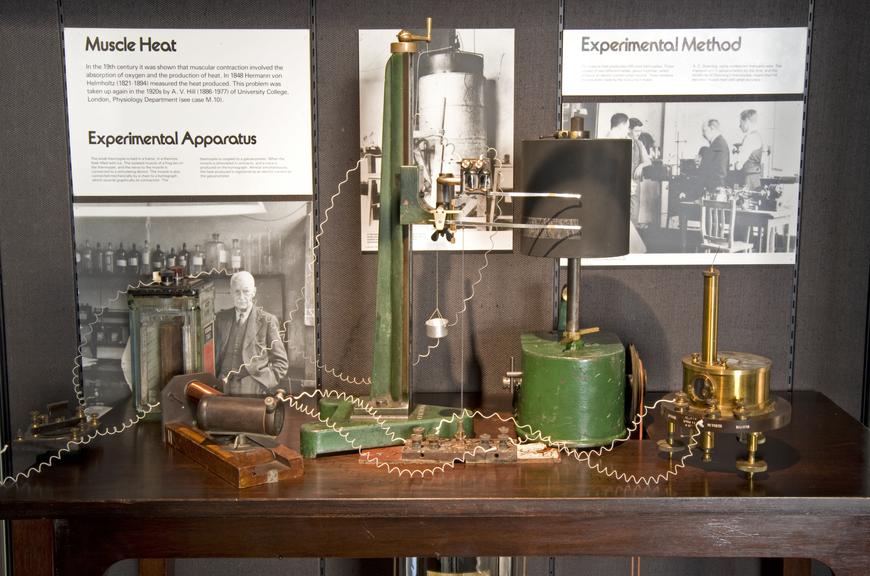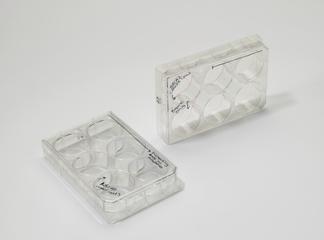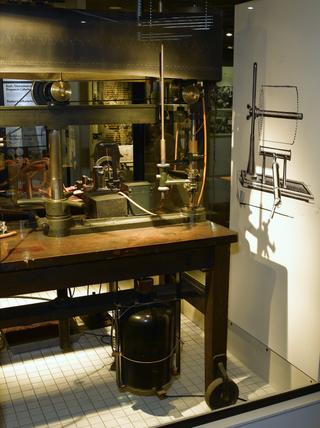
Electrical switch for physiological use, London, England, 1920-1940




Electrical switch, one of four, for physiological use, by C.F. Palmer, London, 1920-1940
Switches are used to control the flow of an electric current around a circuit. Made by C F Palmer, a scientific instrument maker, this switch is shown here in an experimental set up.
An isolated muscle is placed on coils of wire and connected to an electrical stimulus, controlled by a switch. The muscle is also attached to the kymograph to record when the muscle contracts. When the muscle is stimulated, heat is produced and transferred to the thermocouple (cut away to show the two coils of metal which, when heated, produce an electric current). The thermocouple is attached to a galvanometer to record the electric current produced when the thermocouple is heated.
Details
- Category:
- Laboratory Medicine
- Object Number:
- 1981-607/2
- Materials:
- brass (copper, zinc alloy) and iron
- type:
- electric switch




